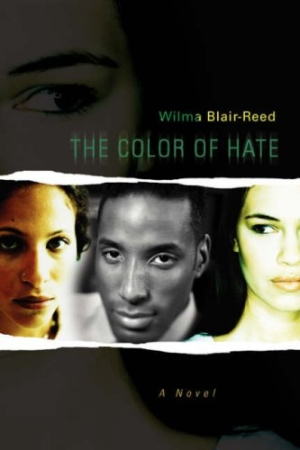
The Color of Hate
The Color of Hate chronicles the marriage of Doris and Shaun McDaniel and takes a thought-provoking look at both private and public race-related struggles.
Doris and Shaun have a financially comfortable lifestyle in Atlanta. Both work to help other black families succeed, although through different approaches. Shaun helps them secure home loans through his Creative Financing company, while Doris is an educator who later goes into politics seeking widespread change and racial equality. Facing the challenges typical of other couples, such as how to divide child-rearing responsibilities while maintaining their careers, their different advocacy methods make for added tension in the marriage.
The narrative spans a few decades, from the 1970s through the 1990s, beginning with the birth of their children, Raymond Charles and Valeska, to the adoption of Shauna, a child Shaun fathered during a brief affair with a white woman, Kathleen. Doris struggles to accept the child into the family, and she must also come to terms with Shaun’s betrayal while confronting her personal views on race.
Doris and Shaun are flawed but realistic characters. Author Wilma Blair-Reed personalizes broad social justice issues through the trials of her main players, however, many generalizations about typical behaviors for whites and blacks keep the story from digging deeply into the complexities of racial tension. The result is analysis that remains on a surface level.
The timeline and organization of the plot are also confusing at points. Throughout, the narrative is revealed from several perspectives, but shifts often occur within chapters. Ultimately, all characters take on a similar but muddled internal voice. In addition, the book’s pacing through the first half is slow, as the storytelling is often presented through summary rather than dialogue. An abrupt shift is introduced in the last forty pages with the beginning of Book 2, which focuses on Shauna, but there is no clear distinction between this section and earlier parts of the novel. The conclusion focuses on a mystery involving Kathleen, but it has little impact since the crime is secondary to other events in the story.
Grammatical errors and missing punctuation scattered throughout the book further distract from the narrative, and readers who are offended by coarse language may find some of the dialogue too harsh.
Important issues about race relations are introduced here through a relatable story and characters you want to root for, but the analysis does not go deep enough to fully engage readers or challenge their perspectives.
Reviewed by
Maria Siano
Disclosure: This article is not an endorsement, but a review. The publisher of this book provided free copies of the book and paid a small fee to have their book reviewed by a professional reviewer. Foreword Reviews and Clarion Reviews make no guarantee that the publisher will receive a positive review. Foreword Magazine, Inc. is disclosing this in accordance with the Federal Trade Commission’s 16 CFR, Part 255.
